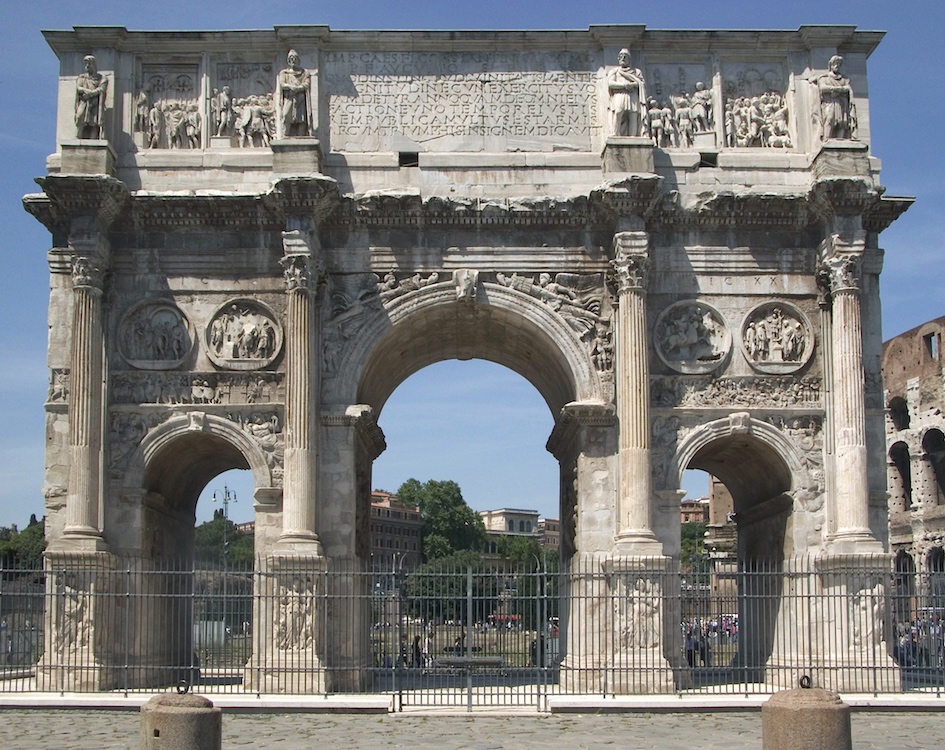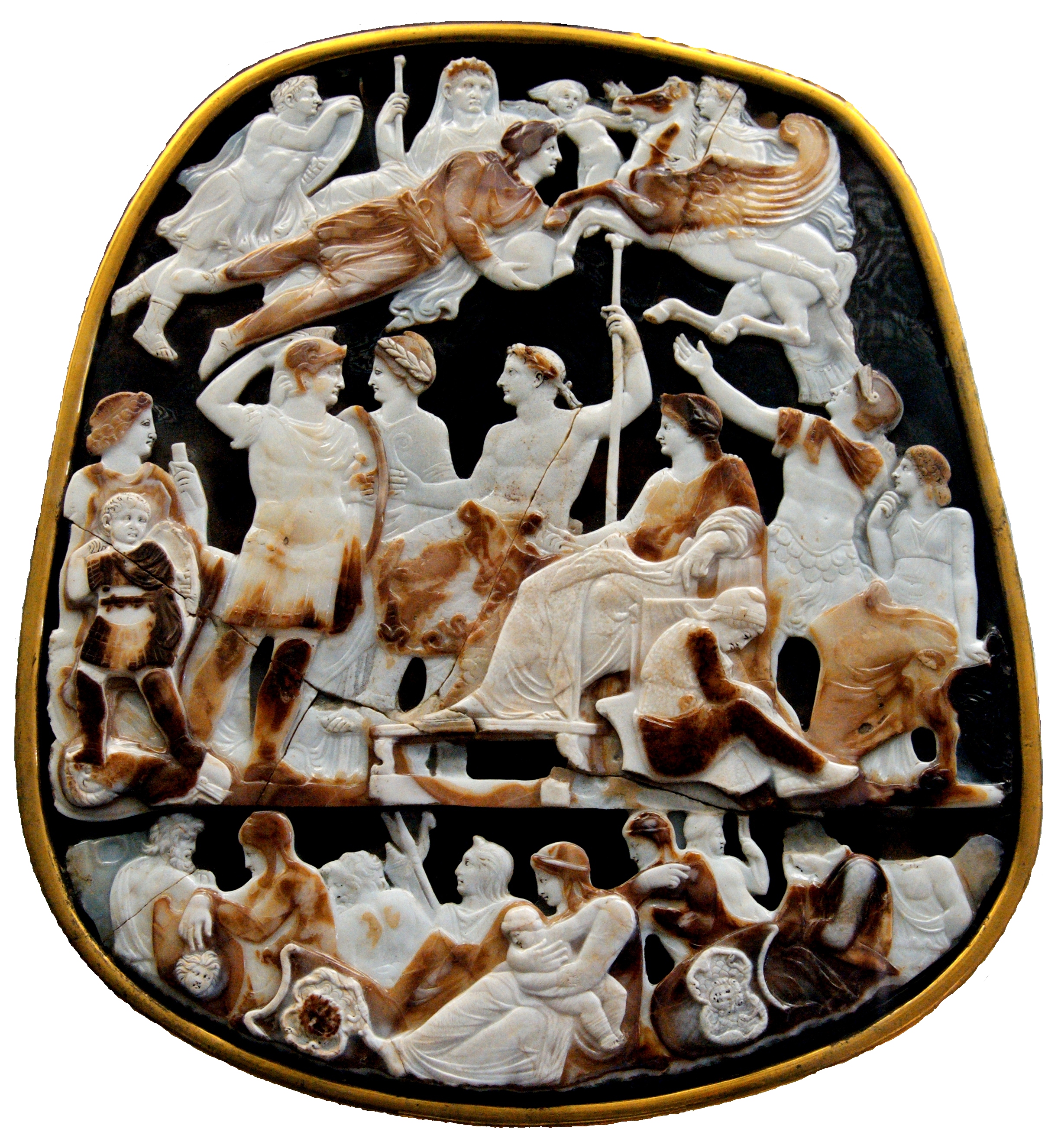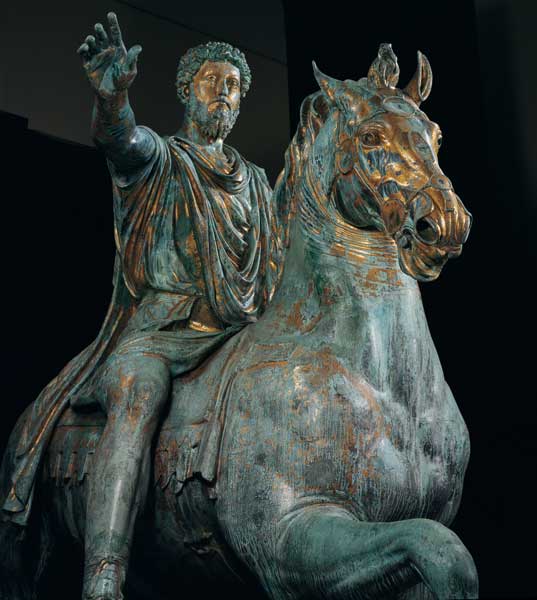While the Greeks influenced the Roman artists, they developed their unique styles and techniques. It is a pity that natural disasters and marauders destroyed most of the Roman paintings and frescoes. However, many columns, arches, houses, mosaics, gems, and sculptures in marble and bronze survived to give today’s generations a deeper look into the lives of the ancient Romans.
As one of human history’s biggest empires, the art of ancient Rome is broad, encompassing traditional art with influences from Europe, Asia, and Africa. Ancient Rome was a melting pot, and Roman artists did not have second thoughts about adopting various artistic influences. Therefore, you can see traces of Egyptian, Etruscan, and Greek influences in ancient Roman art pieces.
Several large museums, churches, piazzas, and private collectors have preserved most of the ancient Roman art. Here are some of the most recognized ancient Roman artworks you should try to see.
Fresco Wall from the House of Livia

The House of Livia was the former residence of Livia Drusilla, Emperor Augustus’ third wife and the mother of Tiberius. It was excavated in 1863. The 2,000-year-old house has some of the most incredible floor mosaics and wall frescoes in Rome during the imperial times. Most of the frescoes in the inner walls of the House of Livia were nicely preserved, probably to show the world the creativity of the artists of ancient Rome. One of the frescoes that captivated viewers was the realistic mural that shows the beauty of nature, including the realistic depiction of trees, flowers, exotic birds, and trees. The painting has intricate details that allow researchers to identify many species. The fresco wall was part of the dining room, which suggests that it provided guests with natural imagery and visual entertainment.
Column of Trajan

The Column of Trajan was one of ancient Rome’s most preserved monuments. By itself, the 125-foot structure was already stunning. But at closer inspection, there are 2,662 figures individually carved around the monument, showing 155 different scenes. These scenes tell various stories, including several political events, speeches by Trajan, sacrifices, negotiations, big battles, and the Roman legions’ famous marches. Overall, the column’s figures detail the operations, administration, and coordination of the army of ancient Rome.
Ara Pacis Augustae or the Altar of the Augustan Peace

The Roman Senate commissioned the building of the Altar of Augustan Peace in 13 BC. It honors Emperor Augustus after his successful campaigns in Gaul and Spain. Completed in 9 BC, the altar became one of Roman art’s finest examples. The Ara Pacis is surrounded by high walls and has an entrance on the west and one on the east. Decorative friezes and beautiful sculptures cover nearly all the outer and inner walls. Processions of imperial house members cover the north and south walls, while the east and west walls show carvings of images emphasizing Roman civic rituals and themes of peace. It is a fitting symbol because Augustus maintained peace in the empire for most of his reign.
Dionysus Frieze at the Villa of Mysteries

It was fortunate that the Villa of Mysteries was not ruined during the eruption of Mount Vesuvius in 79 AD. The villa only suffered minor damage; thus, most of the walls with their frescoes and sculptures were preserved. One room on the villa’s front right is called the Initiation chamber, with mysterious initiation rituals upon reaching adulthood. The frescoes did not document the life’s achievements of a person but rather the moral development of a person through their life’s stages.
Arch of Constantine

The emperors of Rome preferred triumphal monuments that were larger than life. These monuments glorified the significant victories and achievements during their reigns. After his successful campaign at the Battle of Milvian Bridge against the Maxentius, Constantine ordered the construction of a monumental arch. Historians consider the Arch of Constantine, standing impressively at 21 meters, as the largest triumphal arch that survived and imperial Rome’s last monument. It consists of three arches depicting the Battle of Milvian Bridge decorating its lower part.
Column of Marcus Aurelius

Another remarkable monument commemorating victorious military campaigns is the Column of Marcus Aurelius. The column is for his victories against the Sarmatian and German tribes. It is slightly higher at 39 meters against the Column of Trajan, which is 38 meters. However, the Column of Marcus Aurelius has an underground base that is seven meters long. It has 21 spirals covered with relief sculptures. Each spiral outlines Marcus Aurelius’ campaigns from 175 to 172 BC. While most depictions are about military conquests, there are also narratives showing the emperor addressing his troops. Likewise, you can see the engineering achievements during his reign. While the carvings are more expressive, the relief work is more expressive, and the quality of workmanship is higher.
Arch of Septimius Severus

Another arch, this time for Septimius Severus, was constructed to signify and symbolize the emperor’s triumph against the Parthians. The arch commemorated the military conquests that expanded Roman Empire’s territories to present-day Iran and Iraq. The arch is 21 meters high and 23 meters wide. It was made of Proconessian white marble. Aside from the scenes from the military campaigns, the arch also has several deities, changing seasons, and an inscription on the top of the arch dedicated to Septimius Severus and his two sons.
Ixion Room, House of the Vettii

The Blacas Cameo

Another house that escaped the wrath of Mount Vesuvius was the House of Vettii. It was a famous and luxurious residence in Pompeii with some exquisite wall frescoes. Inside the Ixion Room was a fresco with roots from the mythology of ancient Greek. Nearly all the walls had stunning mosaics, but the Ixion Room tells the story of Ixion’s suffering, who Zeus tricked and punished for trying to win Hera’s love.
Roman Mosaics

Instead of painting, the ancient Romans were more inclined to depict their daily lives in Roman mosaics, which showed their artistic flair. With small pieces of ceramic tiles, they created designs on countertops, floors, and walls. Aside from their artistic value, the mosaics help keep their houses cool. The mosaics were easier to clean, too. Roman mosaics decorated public and private buildings in various designs, from geometric to emblems, religious art, and portraits.
The Great Cameo of France

Another stunning cameo from Imperial Rome is the Great Cameo of France, which used five layers of sardonyx. It measures 12 inches by 10.4 inches. It is the largest surviving cameo from the Roman Empire. The cameo has three levels, with 24 carved figures. The first level shows the deceased members of the family of Tiberius. The expanded family of Tiberius is on the second level, while the third level shows the barbarians they have captured.
Head of a Roman Patrician, 1st century BCE

This marble bust is a study in contrast. While the ancient Romans copied the style of the Greek sculptors, they deviated from showing idealized figures in some of their works. In this head of a Roman patrician, the artist did not want to show a young and athletic man. Instead, it showed the face of an older man, representing wisdom in the marked wrinkles on his neck and face. It also alludes to the early part of the Roman Republic, in which patricians only ruled.
Augustus from Prima Porta, 1st century CE

Augustus was the first Roman emperor. To commemorate his ascension to the throne after ending the century-long civil war, he ordered about 70 portrait statues that allude to his noble lineage that went back to Rome’s founder, Romulus.
Prima Porta is the location of the Villa of Livia, owned by the wife of Augustus. The full-body marble statue portrays an ideal figure of the emperor. But it also highlights his might as a military man. He wears a breastplate representing his diplomatic victory and reinstatement of military standards. Cupid, the son of Venus, stands at his right ankle, indicating Augustus’s divine right to rule the empire. The statue has a remarkable feature—a lock of hair from Augustus that his official artists included in all his sculptures to ensure that the Roman public could identify him.
Equestrian Statue of Marcus Aurelius, ca. 176 CE

The bronze equestrian statue of Marcus Aurelius is worth seeing, as it became the model of most equestrian statues produced all over Europe. The sculptor depicted the horse and rider in motion. Marcus Aurelius is depicted with his right arm raised while his horse raised its right foreleg. It showed an impressive display of musculature on the human rider and the animal in intricate detail. It survived destruction because it was initially thought to be the image of Constantine, Rome’s first Christian emperor. A copy of the magnificent statue is at the Piazza del Campidoglio, while the original is housed at the Palazzo dei Conservatori.
Colosseum

Emperor Vespasian commissioned the construction of a massive stone amphitheater called the Colosseum about 70 or 72 AD. It took nearly a decade to complete its construction, which Vespasian did not see. He died before its completion, and his son, Emperor Titus, took on the task. Finally, in 80 AD, the Colosseum opened with 100 days of games. The Colosseum measures 620 by 513 feet (190 by 155 meters), a freestanding structure made of concrete and stone. It has 80 entrances and comprises three stories. Each story has columns of a different style. From the bottom, the columns were Doric, then Ionic, with the top level displaying the more ornate Corinthian style. Nearby is the Arch of Constantine.
Contents
- 1 Fresco Wall from the House of Livia
- 2 Column of Trajan
- 3 Ara Pacis Augustae or the Altar of the Augustan Peace
- 4 Dionysus Frieze at the Villa of Mysteries
- 5 Arch of Constantine
- 6 Column of Marcus Aurelius
- 7 Arch of Septimius Severus
- 8 Ixion Room, House of the Vettii
- 9 The Blacas Cameo
- 10 Roman Mosaics
- 11 The Great Cameo of France
- 12 Head of a Roman Patrician, 1st century BCE
- 13 Augustus from Prima Porta, 1st century CE
- 14 Equestrian Statue of Marcus Aurelius, ca. 176 CE
- 15 Colosseum